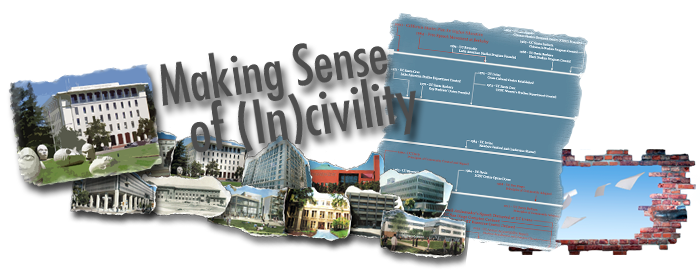How does the university create community? How does each campus accommodate a steadily increasing student population? How does the university respond to an increasingly diverse student body?
As the Master Plan’s predicted “tidal wave” of students entered the UC, each campus had to grow and change. The influx of bodies pressured each campus to construct new infrastructure that would represent the student’s needs and the needs of California. From the 1960s and continuing today, the UC campuses created new academic departments, built new resource centers, and developed new policies to encourage both academic excellence and civil community. Each new African American studies department, each new women’s resource center, and each document expressing a campus’s Principles of Community represents the acknowledgment of those needs goals, but also of previous failure to meet those needs and to nurture the type of tolerant, inclusive, and respectful community that the university asserts itself to be.
California’s public campuses are not only sites of intellectual growth and productivity. They are also public spaces in which people from a vast range of ethnic, socio-economic, religious, political, cultural, and geographical backgrounds interact—sometimes for the first time. We expect these institutions to foster an environment in which ideas and opinions can be freely exchanged in a civil, dignified manner. This is clear as a goal, but its practical accomplishment is less easily imagined. How does a university regulate itself as a community and develop (and maintain) a shared notion of civility?
|


